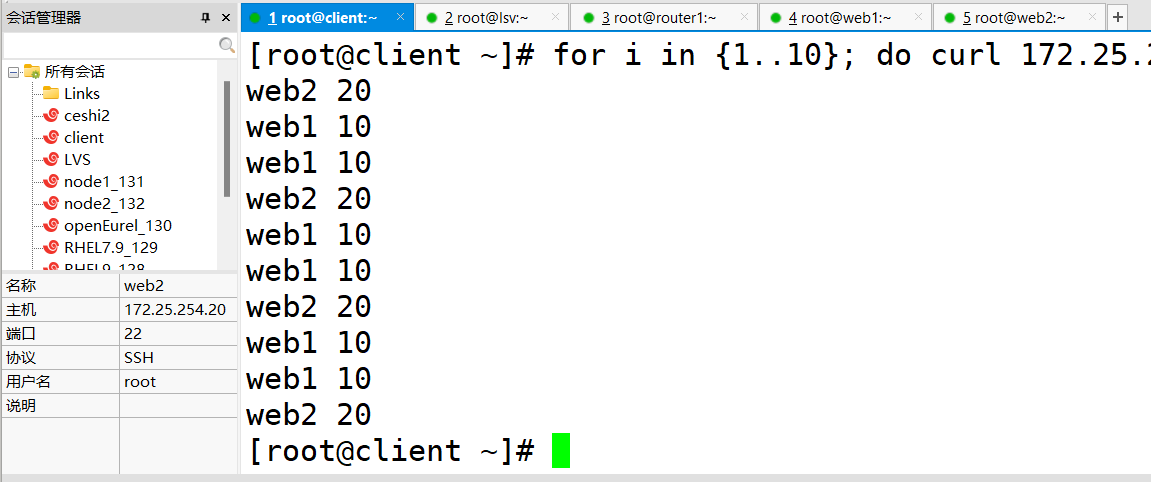A universal method for solar filament detection from Hα observations using semi-supervised deep learning
A&A, 686, A213 (2024)
A universal method for solar filament detection from Hα observations using semi-supervised deep learning (aanda.org)
ABSTRACT
Filaments are omnipresent features in the solar atmosphere. Their location, properties, and time evolution can provide important information about changes in solar activity and assist in the operational space weather forecast. Therefore, filaments have to be identified in full-disk images and their properties extracted from these images, but manual extraction is tedious and too time-consuming, and extraction with morphological image processing tools produces a large number of false positive detections. Automatic object detection, segmentation, and extraction in a reliable manner would allow for the processing of more data in a shorter time frame. The Chromospheric Telescope (ChroTel; Tenerife, Spain), the Global Oscillation Network Group (GONG), and the Kanzelhöhe Observatory for Solar and Environmental Research (KSO; Austria) provide regular full-disk observations of the Sun in the core of the chromospheric Hα absorption line. In this paper, we present a deep learning method that provides reliable extractions of solar filaments from Hα filtergrams. First, we trained the object detection algorithm YOLOv5 with labeled filament data of ChroTel Hα filtergrams. We used the trained model to obtain bounding boxes from the full GONG archive. In a second step, we applied a semi-supervised training approach where we used the bounding boxes of filaments to train the algorithm on a pixel-wise classification of solar filaments with u-net. We made use of the increased data set size, which avoids overfitting of spurious artifacts from the generated training masks. Filaments were predicted with an accuracy of 92%. With the resulting filament segmentations, physical parameters such as the area or tilt angle could be easily determined and studied. We demonstrated this in an example where we determined the rush-to-the pole for Solar Cycle 24 from the segmented GONG images. In a last step, we applied the filament detection to Hα observations from KSO and demonstrated the general applicability of our method to Hα filtergrams.

Developing an Automated Detection, Tracking, and Analysis Method for Solar Filaments Observed by CHASE via Machine Learning
The Astrophysical Journal, 965:150 (11pp), 2024 April 20
Developing an Automated Detection, Tracking, and Analysis Method for Solar Filaments Observed by CHASE via Machine Learning (iop.org)
Abstract
Studies on the dynamics of solar filaments have significant implications for understanding their formation, evolution, and eruption, which are of great importance for space weather warning and forecasting. The Hα Imaging Spectrograph (HIS) on board the recently launched Chinese Hα Solar Explorer (CHASE) can provide full-disk solar Hα spectroscopic observations, which bring us an opportunity to systematically explore and analyze the plasma dynamics of filaments. The dramatically increased observation data require automated processing and analysis, which are impossible if dealt with manually. In this paper, we utilize the U-Net model to identify filaments and implement the Channel and Spatial Reliability Tracking algorithm for automated filament tracking. In addition, we use the cloud model to invert the line-of-sight velocity of filaments and employ the graph theory algorithm to extract the filament spine, which can advance our understanding of the dynamics of filaments. The favorable test performance confirms the validity of our method, which will be implemented in the following statistical analyses of filament features and dynamics of CHASE/HIS observations.

Solar Filament Detection Based on an Improved Deep Learning Model
Appl. Sci. 2024, 14, 3745.
applsci-14-03745-v3.pdf
Abstract
Solar filaments are good tracers of space weather and magnetic flux ropes in the corona. Identifying and detecting filaments helps to forecast space weather and explore the solar magnetic field. Many automatic detection methods have been proposed to process the large number of observed images. Current methods face issues of unreliable dataset annotations and poor anti-interference capability. First, to address the issue of unreliable dataset annotations, we built a solar filament dataset using a manual annotation method. Second, we introduced Transformer into Convolutional Neural Networks. Transformer, with the ability to extract more global features, can help counter interference. In addition, there is large disparity in the size of solar filaments. Therefore, a multi-scale residual block is designed to extract features across various scales. Deformable large kernel attention and a res path are used to better integrate encoder and decoder information. Results show that this method outperforms the existing solar filament detection methods (improved U-Net and improved V-Net), achieving an F1 score of 91.19%. In particular, our results show lower interference by sunspots and background noise than existing methods. The ability to counter interference is improved.


Detection of Solar Filaments Using Suncharts from Kodaikanal Solar Observatory Archive Employing a Clustering Approach
The Astrophysical Journal, 943:140 (10pp), 2023 February 1
Detection of Solar Filaments Using Suncharts from Kodaikanal Solar Observatory Archive Employing a Clustering Approach (iop.org)
Abstract
With over 100 yr of solar observations, the Kodaikanal Solar Observatory (KoSO) is a one-of-a-kind solar data repository in the world. Among its many data catalogs, the “suncharts” at KoSO are of particular interest. These suncharts (1904–2020) are colored drawings of different solar features, such as sunspots, plages, filaments, and prominences, made on papers with a Stonyhurst latitude–longitude grid etched on them. In this paper, we analyze this unique data by first digitizing each sunchart using an industry-standard scanner and saving those digital images in a high-resolution “.tif” format. We then examine cycle 19 and cycle 20 data (two of the strongest cycles of the last century) with the aim of detecting filaments. To this end, we employed the “K-means clustering” method, and obtained different filament parameters such as position, tilt angle, length, and area. Our results show that filament length (and area) increases with latitude and the poleward migration is clearly dominated by a particular tilt sign. Lastly, we cross verified our findings with results from KoSO digitized photographic plate database for the overlapping time period and obtained a good agreement between them. This work, acting as a proof-of-theconcept, will kickstart new efforts to effectively use the entire hand-drawn series of multifeature, full-disk solar data and enable researchers to extract new sciences, such as the generation of pseudomagnetograms for the last 100 yr
Solar Filament Detection Using Deep Learning
<p><span>Solar Filament Detection Using Deep Learning</span><b></b></p> by Blessing Winifred Odume :: SSRN
Abstract
The paper presents a reliable approach for automatically detecting solar filaments in H-alpha full-disk solar images using a deep learning approach. This method minimizes the impact of noise on the solar images and accurately identifies solar filaments. A lack of datasets was addressed by using data argumentation to reduce overfitting. During deep learning, the initial dataset was augmented with new training data, which resulted in thousands of images being produced for training and validation. Consequently, 24,400 training samples were generated for SegNet and 20,000 for U-Net after the argumentation process.
Solar-Filament Detection and Classification Based on Deep Learning
Sol Phys 297, 104 (2022)
Solar-Filament Detection and Classification Based on Deep Learning | Solar Physics (springer.com)
Abstract
Solar filaments are distinct strip-like structures observed in chromospheric \text{H}\alpha images. Filament eruptions, flares, and coronal mass ejections (CMEs) can be regarded as the same physical process of releasing magnetic energy at different times and solar atmosphere heights. It is very important to detect filaments for forecasting flares and CMEs. This article proposes a new solar-filament detection and classification method based on CondInst; a deep-learning model. A data set of solar filaments is built, including ten thousand filaments. To distinguish filaments that consist of only a single connected dark region and filaments that are broken into several fragments, the filaments are classified into isolated filaments and non-isolated filaments. The mean precision, recall, AP, and F1 obtained using the proposed method are 90.83\%, 83.88\%, 82.86\%, and 87.22\%, respectively. The results show that the method performs well in detecting and classifying isolated and non-isolated filaments, especially in solving the fragments problem of how to detect a filament that is broken into several fragments. The method also has good performance in handling various images, even with existing uneven brightness or low contrast. The precision of filament masks still needs to be improved in the future.
Solar Filament Segmentation Based on Improved U-Nets
Sol Phys 296, 176 (2021).
Solar Filament Segmentation Based on Improved U-Nets | Solar Physics (springer.com)
Abstract
To detect, track and characterize solar filaments more accurately, novel filament segmentation methods based on improved U-Nets are proposed. The full-disk H images from the Huairou Solar Observing Station of the National Astronomical Observatory and the Big Bear Solar Observatory were used for training and verifying the effectiveness of different improved networks’ filament segmentation performance. Comparative experiments with different solar dataset sizes and input image quality were performed. The impact of each improvement method on the segmentation effect was analyzed and compared based on experimental results. In order to further explore the influence of network depth on filament-segmentation accuracy, the segmentation results produced by Conditional Generative Adversarial Networks (CGAN) were obtained and compared with improved U-nets. Experiments verified that U-Net with an Atrous Spatial Pyramid Pooling Module performs better for high-quality input solar images regardless of dataset sizes. CGAN performs better for low-quality input solar images with large dataset size. The algorithm may provide guidance for filament segmentation and more accurate segmentation results with less noise were acquired.
Solar Event Detection Using Deep-Learning-Based Object Detection Methods
Sol Phys 296, 160 (2021).
Solar Event Detection Using Deep-Learning-Based Object Detection Methods | Solar Physics (springer.com)
Abstract
Research on the detection of solar events has been conducted over many years. Recently, deep learning and data-driven approaches have been applied to solar event recognition. In this study, we present solar event detection using deep-learning-based object detection methods for real-time space weather monitoring. First, we construct a new object detection dataset using imaging data obtained by the Solar Dynamics Observatory with bounding boxes as labels for three representative features: coronal holes, sunspots, and prominences. Second, we train two representative object detection models: the Single Shot MultiBox Detector (SSD) and the Faster Region-based Convolutional Neural Network (R-CNN) using the new dataset. The results show that both models perform similarly well for coronal hole and sunspot detection. For prominence detection, the SSD and Faster R-CNN exhibited relatively low performance. This study demonstrates that deep-learning-based object detection can successfully detect multiple types of solar events, and it may be extended to detect other solar events. In addition, we provide the dataset for further achievements of object detection studies in solar physics.
基于改进VNet太阳暗条检测方法
Vol.19 No.1 Jan., 2022 天 文 研 究 与 技 术
标题 (ati.ac.cn)
摘要
太阳暗条作为太阳大气磁场的示踪,对研究太阳磁场有极其重要的意义。针对现 有的暗条检测方法存在检测精度不高,弱小暗条错检、 漏检等问题,提出一种基于改进VNet网络的太阳暗条检测方法。首先,使用大熊湖天文台Hα全日面图像并结合磁图制作 了太阳暗条数据集。其次,在VNet网络下采样部分采用Inception模块融合不同尺度特征图 的特征,同时加入注意力机制增强特征图中暗条部分的语义信息。最后在上采样部分引入深 度监督模块,更多地保留太阳暗条的细节特征。为验证算法性能,采用191幅Hα全日面图 像数据集,其中包含暗条共3372条。算法在测试数据集上平均准确率达到0.9883,F1值 达到0.8385。实验结果证明,该方法可以有效识别Hα全日面图中的暗条。




















